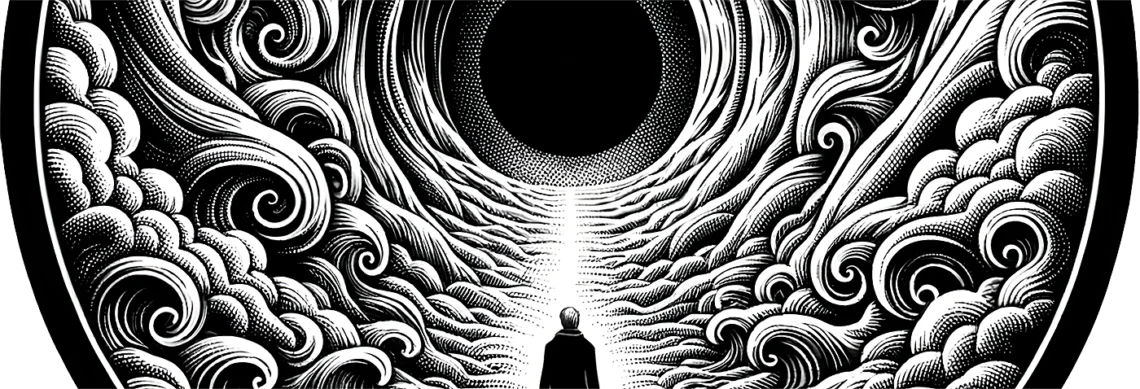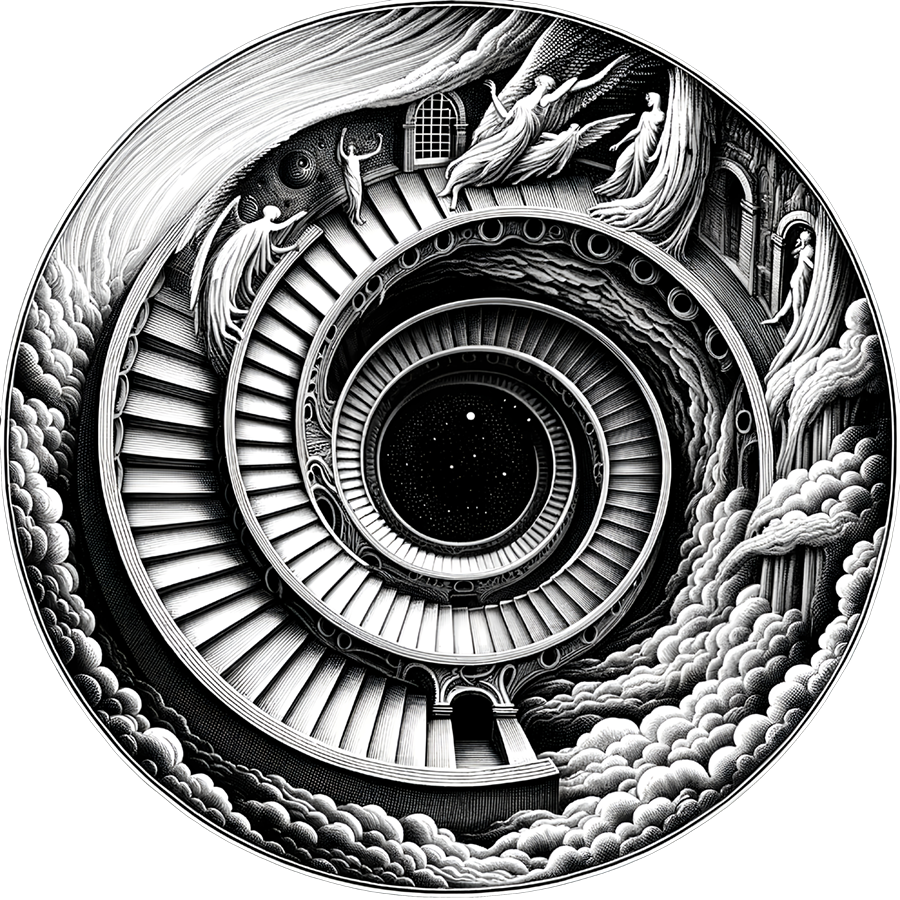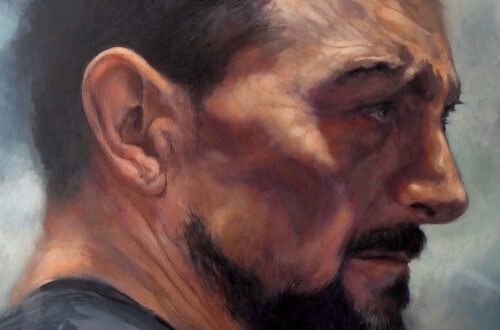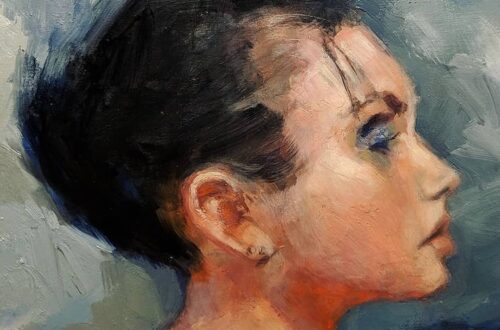
What is Shadow Work? Understanding The Hidden You
Excerpts selected from Chapter 1 of my book The Creative Shadow: An Art Therapy Shadow Work Journey are compiled in this post. If you register below I’ll send you a download link to the next chapter (PDF file) from the book.
“Everything of which I know, but of which I am not at the moment thinking; everything of which I was once conscious but have now forgotten; everything perceived by my senses, but not noted by my conscious mind; everything which, involuntarily and without paying attention to it, I feel, think, remember, want, and do; all the future things which are taking shape in me and will sometime come to consciousness; all this is the content of the unconscious”
Carl Jung, 1921
Understanding Shadow Work
There is something compelling to us about the notion that we have a hidden aspect of ourselves, a shadow self. Something that is not obvious. It wallows beneath the surface like the body of an iceberg exerting an often inescapable and yet imperceptible force of nature upon us. So what is the inherent power in this intriguing area of psychology? Where is our shadow and where does it come from?
In our shadow self exists not only huge potential for self-sabotage but also for self-fulfillment. To understand shadow work more deeply and benefit from its transformational power it is helpful to understand the larger model of the self of which it is a part.

Jung’s Model of the Human Psyche
The Swiss psychiatrist Carl Jung described our human psyche as a complex set of systems that interact with each other. He divided our psychological make up into distinct areas and there is a further division between conscious and unconscious. The three main systems are the (conscious) ego, the personal unconscious and the collective unconscious.
The Conscious Ego
The conscious ego is the centre of this model of the psyche. It represents our everyday awareness and sense of self. This is the part of you that interacts day to day with the external world. It makes practical decisions based rational thinking and your history of remembered personal experience.
The Personal Unconscious
The personal unconscious is a layer that surrounds the conscious ego and exerts an often unseen influence on our behaviours. This contains memories, experiences and thoughts including forgotten and repressed memories. Often aspects of the personal unconscious are inaccessible from day to day. This is the realm where the shadow self mostly resides although it is also (to some extent) rooted in…
The Collective Unconscious
The collective unconscious is the third main component of the inner world. This is a hard wired, deeply rooted layer of commonality that we all share no matter what our cultural background. It is within the collective unconscious that the archetypes are held. Like a set or pre-recorded instructions that exist at our root. They have their origins in the very human condition itself.
The goal of this Jungian based model of the psyche is to achieve the state of ‘selfhood’. To achieve a more balanced and harmonious self. Jung proposed that this could be achieved through the process of individuation or becoming more aware of one’s self and integrating and reconciling the various aspects of ourselves both overt and covert.
What are Archetypes?
Carl Jung’s ‘archetypes’ are fundamental concepts in this theory of analytical psychology. They represent universal and recurring symbols that resonate with our deeper selves and that are present (argues Jung) in the collective unconscious of humanity.
Jung believed that these archetypes are innate in our psyche are and shared by people across different cultures and time periods. They play a significant role in shaping our thoughts about our place in the world and our behaviours and interpretations of life experiences.
Archetypes are powerful symbols for the interpretation of self and our life experiences. Jung identified the concept and described many of them across his works although they feature prominently in ‘The Archetypes and the Collective Unconscious’ (1959). The idea of archetypal symbols of the ‘self’ developed over decades of Jung’s career but what exactly are archetypes?
An archetype is a symbolic template that helps us make sense of the human condition by using universal symbols that we all understand no matter what our cultural background might be. We might encounter these as dreams, symbolic characters in art, religious figures or mythical beings in stories.
Archetypes transcend any cultural barriers and have characteristics and traits that are recognisable and symbolically meaningful to us all by virtue of the fact that we are all human beings. Jung believed that archetypes are hard wired into our system in the same way that specific animal behaviours might manifest themselves.
Jung believed that our primitive ancestral roots have a large part in dictating the basis of the psyche. That the archetypes are patterns that emerge from those root beginnings.
Self, Persona, Anima, Animus and the Shadow Self
It was Jung’s belief that modern man sees almost everything in terms of science. He has lost that simple direct relationship to the natural and beautiful things. He believed that we have to re-educate ourselves to reconnect with a sense of beauty and poetry and the feeling for nature and art. He thought that in the west we are growing more and more divorced from nature. If it is our intention to develop the whole person and unite the Self, we must bring back that feeling for nature and art and start by developing our relationship to the unconscious.
As scientific understanding has grown, so our world has become dehumanized. Man feels isolated in the cosmos because he is no longer involved in nature and has lost his emotional “unconscious identity” with natural phenomena. These have slowly lost their symbolic implications. Thunder is no longer the voice of an angry god, nor is lightning his avenging missile.
No river contains a spirit, no tree is the life principle of a man, no snake the embodiment of wisdom, no mountain cave the home of a great demon. No voices now speak to man from stones, plants, and animals, nor does he speak to them believing they can hear. His contact with nature has gone, and with it has gone the profound emotional energy that this symbolic connection supplied.
C.G. Jung, Man and His Symbols
Jung believed that many of the problems in modern life have their roots in our disconnection and alienation from our instinctual foundations. This is particularly true of western society where we are discouraged from balancing our masculine and feminine sides and increasingly separated from the natural world.
The archetypes are a tool for reinforcing this connection to our more soulful side and recognising that within ourselves there exists the innate structure to rebuild our connections to a deeper sense of self.
Of all the archetypes that inhabit our subconscious, Jung believed that four were primary in their definition of our character. These are the Self, Persona, Anima/Animus and the Shadow Self. The latter is of course the focus of our practice and we’ll explore this in depth across our journey but what of the other three? How do they fit in to this model of our personality? Let’s take a look at what these four component parts define within us.
The Self
At the pinnacle of the archetypal hierarchy stands the Self, the archetype of ultimate unity and integration. The goal of shadow work is to ultimately find self-realisation and to harmonise all aspects of the psyche. The Self represents this goal of achieving a balanced and authentic selfhood. A state where the various archetypal forces will ideally find some equilibrium.
Don’t mistake the integration process as striving for perfection. Integration is more about recognising the different aspects of ourselves and acknowledging the influence of these parts on the whole Self.
The Persona
We all have a façade that we present to the outside world. This is not wilfully subversive or deceptive but simply a method of conforming and hiding the aspects of ourselves that are required for us to conform to our community and societal norms. The term ‘persona’ originates form the Greek word for mask. A successful Persona should be recognised as such and be used as an intermediary between the true aspects of your personality and an ‘acceptable’ version of your true self. The Persona is like your inbuilt promotion and marketing department that shows a best self to the outside world.
The Persona is mostly shaped during childhood when we start to recognise the social requirements to conform to the expectations of others; our peer group, our teachers and parents. When the persona goes awry it can result in people not being able to separate their persona from their actual self e.g. someone who identifies too strongly with their work role. The less acceptable aspects of your personality may be subdued to the shadow self to enable easier assimilation into society and community.
The Shadow
The eponymous archetype itself, the Shadow represents the hidden aspects of our personality, encompassing both the dark and the light. It comprises the qualities and potentials we have repressed or disowned, often due to societal conditioning or personal traumas. Engaging with the Shadow is at the core of shadow work. It allows us to confront our inner demons and reclaim lost parts of ourselves.
The Anima and Animus
In the depths of our psyche, the Anima and Animus represent the feminine and masculine aspects, respectively. These exist within all individuals, regardless of gender. These archetypes symbolise the opposite gender within us, offering insights into our inner relationships and the way we relate to the external world. Integrating the Anima and Animus can be a satisfying and enlightening aspect of shadow work. It helps to encourage overall balance and wholeness.
Further Groups of Archetypes
You’ll often find that lists of archetypes vary and this can be confusing. Remember that different list of archetypes and subsets can be selected depending on the context. You won’t find an accurate ‘definitive list’ of archetypes as this would be an over simplification. However the following subset is commonly used when discussing archetypes in relation to our understanding of modern life.
This common group that you will encounter in many scenarios is that of The Artist (or Creator), The Innocent, The Sage, The Explorer, The Outlaw, The Magician, The Hero, The Lover, The Fool (or Jester), The Everyman, The Mother (or Caregiver) and The Ruler. We’ll explore these archetypes and what they mean generally and most importantly for you in part three of this book. There are others of course (Thief, Trickster, Warrior, Hermit, etc.) and you may find in the fullness of time that you progress to explore these.
These types of archetypes have a practical application and many of them are used in business to communicate ideas such as the embodiment of a brand or a leadership value set. Business coaches will often refer to archetypes and use them as tools for building self-awareness and enhancing self-development in leadership.
Archetypes in Shadow Work
We can see from the examples above that archetypes can have a very practical application in specific self-development areas. Archetypes are not merely theoretical constructs. They serve as dynamic facets of our psyche that we can utilise in our everyday life to inspire, reflect and shape our pivotal thoughts, behaviours and perceptions. When we practice shadow work these archetypes take on a more powerful significance and serve as guides on the journey.
Shadow work, as conceptualised by Jung and expanded upon by contemporary practitioners. This is a process of delving into the hidden corners of our psyche, where our unacknowledged fears, desires, and unresolved conflicts reside. It’s a journey to unearth the aspects of ourselves that have been repressed, denied, or relegated to the shadows of our consciousness. In this profound exploration, archetypes emerge as key companions, representing archaic and potent symbols that reflect the depths of the human experience.
Projection and Mirroring in Shadow Work
Before we can begin our journey towards this realisation of the ultimate archetype in the Self it is useful to reflect on some of the methods through which our subconscious reveals itself.
One of the most illuminating aspects of shadow work is the exploration of projection and mirroring. These fundamental psychological mechanisms that offer us profound insights into the hidden aspects and unexamined depths of ourselves. Understanding how projection and mirroring operate and recognising their presence in our interactions with others is a useful tool in this transformative journey.
Exploring the Concept of Projection
Projection is a psychological phenomenon in which we unconsciously attribute our own thoughts, feelings, or qualities to another person or external situation. It’s as if we’re holding up a mirror that reflects our inner world onto the people and circumstances around us. In shadow work, projection is a powerful tool for self-discovery. It reveals the aspects of ourselves that we may be reluctant or unable to acknowledge. Let’s explore some examples of projection:
Judgment and Criticism
Have you ever found yourself intensely critical of someone’s behaviour or personality traits? This criticism can be a projection of your own insecurities or unacknowledged qualities onto that person.
Idealisation
On the flip side, projecting positive qualities onto someone can also be a form of projection. For instance, when you admire someone excessively (unhealthily) and place them on a pedestal, it may reflect your own unacknowledged potential or qualities you aspire to possess.
Conflict Patterns
Recurring conflicts or clashes with specific individuals might indicate areas where your own unresolved issues are being projected onto them. These conflicts can provide valuable clues about ourselves that can be useful in our exploration of shadow work.
Attraction and Repulsion
Attraction to certain individuals can be driven by the projection of qualities you admire or desire. Conversely, strong aversion to someone may be a sign that you’re projecting qualities you dislike or fear.
The Mirror Effect
Imagine a mirror placed in front of you, but instead of reflecting your physical appearance. It reflects your inner world—the hidden facets of your psyche. This metaphor captures the essence of projection and mirroring in shadow work. When we project onto others, we’re essentially seeing aspects of ourselves, often those residing in the shadow, in the people we interact with. These mirrored qualities can be positive or negative, representing both our hidden potentials and our unresolved issues.
The Aims and Benefits of Shadow Work
The dynamics of projection and mirroring within the context of shadow work now covered, we can turn our attention to the reasons why you might choose to engage in this transformative journey. As you can see there is a lot of potential baggage that might be unpacked here. Much of it has the potential for discomfort. If you are going to engage in this revealing journey it’s natural to ask what does this process hold for you?
Why Engage in Shadow Work?
There has been much written and acknowledged about the benefits of shadow work. This is a very personal experience of course. My hope is that you will not only see some of the advertised benefits but also start to simply feel more settled in yourself. To gain a feeling of some sort of personal progress.
At the heart of shadow work lies the desire to increase your selfawareness. To get to know yourself more deeply is a key goal as I have explained above. Confronting your shadow, the aspects of yourself that you have repressed or denied should help you gain valuable insights into your sometimes obscure motivations, fears, and desires. This heightened selfawareness should help to make your conscious choices aligned with a more authentic sense of the Self.
Remember that this is a journey of growth and transformation. If used sensitively it should empower you to face your inner demons, heal past wounds, and integrate repressed qualities. By embracing the aspects of your shadow, you can expand your emotional and psychological horizons. Hopefully in turn this leads to a more profound sense of personal growth and self-empowerment.
In this uniquely structured shadow journey you will see that the uncharted territory of the shadow often holds untapped creative potential. When you explore the depths of our unconscious you will unearth ideas that are innovative and fresh perspectives that have creative potential. Shadow work can be a wellspring of creativity, leading to very personal novel concepts and unique expressive solutions, ideas and imagery.
Repressed emotions, when left unexamined, can exert a powerful, often negative influence on our lives. Shadow work projects provides a safe space to express and integrate these emotions. This should help you to foster a sense of emotional liberation and inner peace both within and without the self. You’ll find that engaging in this practice can also improve your relationships. Understanding how our unconscious influences our interactions with others can lead to more authentic, empathetic, and harmonious connections.
The creative shadow work project is not merely an introspective exercise. It is also a potent catalyst for personal growth and self-discovery. It holds the potential to unlock hidden locations within our personal landscape. It illuminates the journey towards a greater sense of self, increased inner harmony and enhanced creativity.
If you want to read more about shadow work and how an art therapy approach can help you engage with this creative form of self development – register below and I’ll send you a free PDF file of the next chapter.






